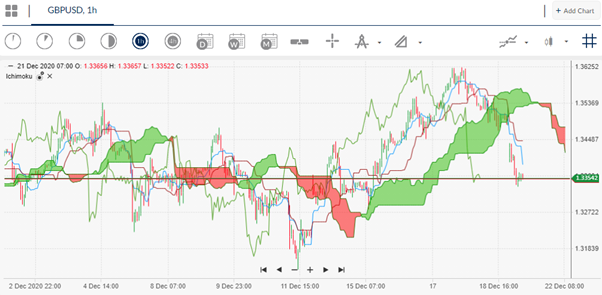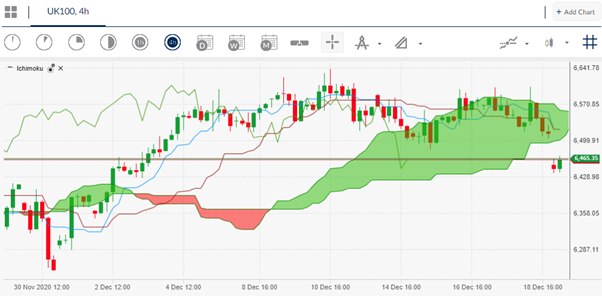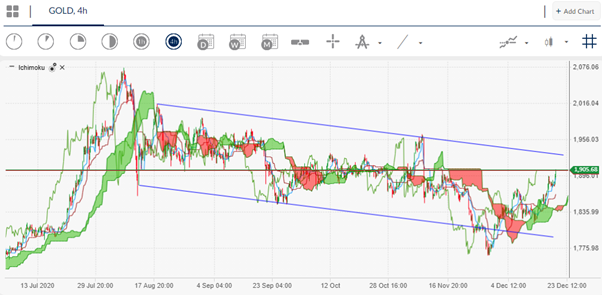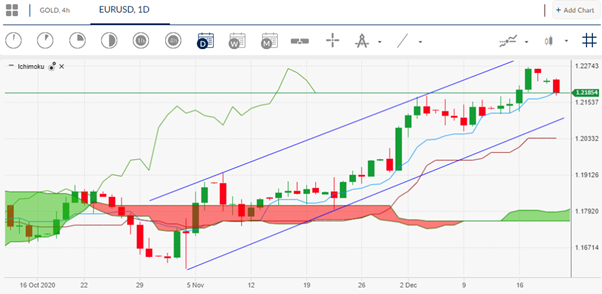During this shortened trading week financial markets are without a doubt going to focus on Brexit, Coronavirus, and the US stimulus package, and a raft of high-impacting economic data from the United States economy.
Both the UK and the European Union failed to come to agreement over the weekend, and supposedly breached the “final deadline” for a Brexit deal. Despite breaching this deadline, both sides are expected to carry on negotiations, which really underscores the fact that the EU is losing credibility setting deadlines in name only. Time is quickly running out before the United Kingdom’s planned departure from the European Union.


The Brexit news has been swept to one side, as a new strain of COVID-19 has been found in the UK, which has provoked a major bout of negative sentiment in financial markets this morning. Boris Johnson announced that London was going into a tier 4 lockdown over the new COVID-19 strain during the weekend, which effectively cancelled Christmas for many families and Londoners.
The FTSE 100 looks heavy at the start of the week, and sterling has not taken the news well. The FTSE 250, which is also considered to be more effective gauge of Brexit-related sentiment, is also taking a hammering.


To make matters worse, a number of countries have banned travel to the UK, placing a further strain on the heavily service sector reliant United Kingdom economy. UK retailers make a significant portion of their annual profits during the Christmas and New Year period, with only non-essential businesses open in London, the economic prospects for small businesses and high street shops looks dire going into 2021.
UK Prime Minister Boris Johnson will chair a crisis meeting of the government’s Cabinet Office Briefing Room, known as COBRA, later today. Just for some context, such meetings are convened to address the actions of government bodies in response to a national crisis.
Going back to the FTSE 100, I will be watching NatWest’s share price, as the new lockdown restrictions are expected to hurt the UK banking giant’s margins. Royal Mail is also on my watchlist, due to the company having a lot of criticism over postal delays, and heightened competition from Amazon and Hermes.
U.S. stimulus is also going to be key for traders and investors this week, and indeed whether we see a continuation of the ongoing rally, or indeed whether traders start to book profits. The is especially important for US dollar shorts and gold longs.


Gold has already started to firm this morning and is likely catching a safe-haven bid from fears surrounding the new strain of COVID-19. Traders may also be positioned long, in expectation that the US will sign the new COVID-19 relief bill today.
Looking at the week ahead the United States is set to dominate the economic calendar with the release of GDP, inflation, Durable Goods Orders, and weekly jobless claims, which has taken on another layer of importance since many states have gone into draconian lockdowns.
In my mind, the release of Core PCE is probably the major risk event to watch on the economic docket. Many economists have been warning that inflation is coming. If we see this metric outpacing expectations to the upside, then financial markets are probably going to react accordingly.
This afternoon traders’ attention turns to EU Economic Confidence data, with expectation set at -17.6, which is inline with the November reading. It remains to be seen if the recent upbeat manufacturing data from Germany will translate into increased confidence in the eurozone. I suspect not, as COVID-19 lockdowns are still looming over the EU, and look set to continue well into next year.


The EURUSD pair has weakened this morning over the recent UK lockdown news, and lack of progress over Brexit negotiations. The EURUSD is fascinating on many levels and will likely go into the next phase of the ongoing bull trend or reverse sharply from current levels over Brexit and COVID-19 fears, and a possible unwinding of U.S. dollar shorts.




